Blessed Rani Maria, you gave your life in love and service to others, even in the face of great suffering. Intercede for us, that we may live with the same courage and compassion. Help us to remain faithful and strong in our own trials, and to always seek justice and peace. May your example of sacrifice inspire us to serve God and our neighbors with a pure heart. Amen.
BLESSED. SR. RANI MARIA VATTALIL
BLESSED. SR. RANI MARIA VATTALIL
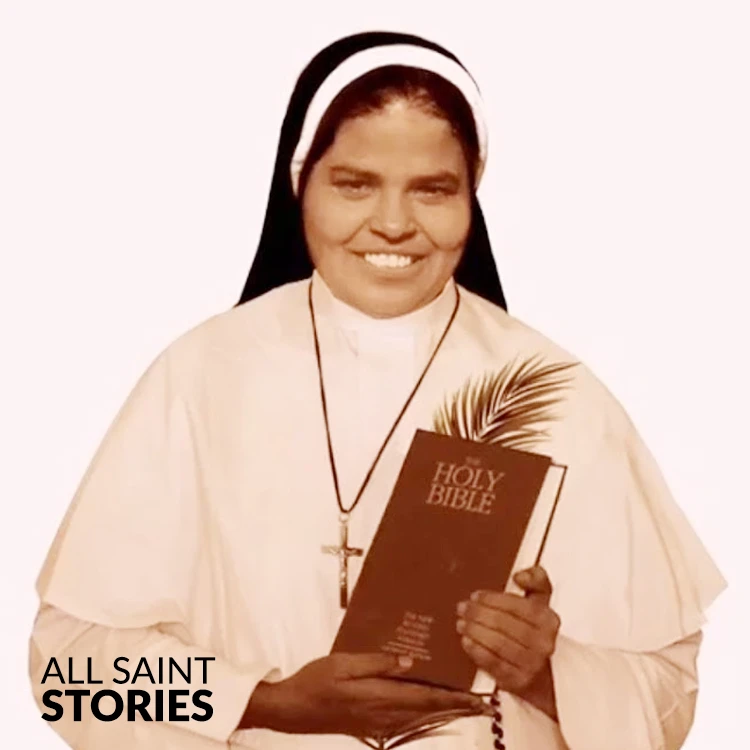
Sr. Rani Maria, a martyr for her faith, was a missionary who dedicated her life to serving the poor and oppressed in India, particularly in North India. She was murdered for her efforts to spread Christianity. Her act of forgiveness, demonstrated by her family, is a powerful testimony of Christian love and grace.
Sr.Rani Maria was born in an ordinary peasant family on January 29, 1954, as the second child of Paily and Eliswa of Vattalil. Her baptism took place on February 5, 1954, at St. Thomas Church in Pulluvazhy, and she was given the name "Mariam" in honor of Mother Mary, Jesus' mother. Varkey, her uncle, and Mariamma, her grandmother, were her godparents. Her God-fearing parents raised her and their six other children — Stephen, Annie, Varghese, Thressiamma, Celine, and Lusy – in Christian religion and generosity. Celine would subsequently join the Franciscan Clarist Congregation, taking the name Selmy Paul, after her elder sister Rani Maria.
On April 30, 1966, Marykunju ("Little Mary") received her Christian initiation by receiving her first Holy Communion and the Sacrament of Confirmation. Her parents and grandparents instilled in her the value of prayer from an early age. Even as a child, she was a regular attendee of Holy Mass and participated in popular devotions. She attended catechism classes frequently and put what she learned into practice in her daily life.
Her formal education began with two years of 'Kalari' (the traditional type of pre-primary education). She was then transported to Pulluvazhy's Government Lower Primary School, where she was assigned the name V.P.Mary.
She went to Jayakeralam High School Pulluvazhy after finishing basic school. She also found time to assist her father with farm labor and her mother with household chores. She took a strong interest in and had a special affection for the servants, and she made time to converse with them.
Her parents sent her to St. Joseph's High School Tripunithura after she received an excellent grade in the Secondary School Leaving Certificate exams. Her existence in the school and boarding turned out to be quite favorable to her spiritual and intellectual growth under the supervision and leadership of the nuns. She was able to successfully complete her education.
Vocation in Religion
P. V. Mary felt the call of the Lord to pursue the consecrated life during her senior year of high school.
Her cousin Cicily (Sr.Soni Maria FCC), who had the same wish, was the recipient of her inner promptings. They decided to join the Franciscan Clarist Congregation after repeated visits to the adjacent convent and friendship with the FCC sisters. Mary was concerned about her parents' and relatives' reactions. She summoned the fortitude to convey her wish to join the convent one day.
Mary and her cousin began their aspirancy at the Franciscan Clarist Convent in Kidangoor on July 3, 1972. After completing Aspirancy (3.7.1972 to 30.10.1972), Postulancy (1.11.1972 to 29.4.1973), and Novitiate (30.4.1973 to 30.4.1974), Mary, then nearly 20 years old, made her first profession in the Franciscan Clarist Congregation on May 1, 1974, under the new name Rani Maria, the first word Rani meaning "Regina" or queen.
Sr.Gladys, Mary's mistress throughout Aspirancy and Postulancy, says of her: "She always had a smile on her face and was a brilliant girl." She was meticulous in all she did and never complained about anything.
She didn't need any reprimands. She was a firm believer in what was right and true, and she always spoke her mind. Every hour, Sr.Rani Maria would purify herself by reciting and humming ejaculatory prayers and religious songs. "Jesus" was her favorite ejaculatory prayer during her working hours. She continued to say the name "Jesus" until she exhaled her last breath. She was heard repeating "Jesus, Jesus" right up until her death agony was over.
"She was unique and excellent in her prayer, study, the obedience of the regulations, obligations entrusted to her; in short, in everything," Sr. Infant Mary, her Novice Mistress, said in her biography of Sr. Rani Maria. She was never irritated by or with other people. When she was called upon to point out the flaws in others, she was objective and precise. She was always very worried about God's will." Sr. Infant Mary used to tour the missions as the Provincial Councillor of Missions in North India, sharing her experiences with her novices and emphasizing the importance of disseminating the Good News among the millions of illiterate and ignorant people of North India. The seed of a missionary vocation was thus planted in Mary's heart. Her missionary passion was kindled after hearing missionaries' stories. "I, too, want to go to North India, to serve the underprivileged and die for them," she used to say.
Life as a Missionary
"The Lord has anointed me to preach the Gospel to the poor, so the Spirit of the Lord is upon me." He has sent me to announce freedom to the prisoners and sight to the blind, to set free those who have been oppressed, and to proclaim the Lord's acceptable year (Lk.4: 18)". Sr. Rani Maria's motto was this Gospel text, which she recorded in her own recordings. She was certain of her calling to be a missionary. She understood that learning the local language would help her be more efficient in her missionary efforts. As a result, she left the mission areas on July 9, 1975, and began language study at the Provincial House of Sisters of Notre Dame, Patna.
Bijnor
Rani Maria came at St. Mary's Convent in the diocese of Bijnor on December 24, 1975, after completing her language studies. Despite her intention to assist the needy in the villages, Sr. Rani Maria was appointed as a teacher at St. Mary's School Bijnor due to a lack of skilled local teachers. From September 8, 1976, to August 7, 1978, she worked as a teacher for two years. She was involved in social ministry after school hours during this time. She made her last profession at St. Hormis Church in Ankamaly on May 22, 1980.
Odagady
Sr.Rani Maria was assigned to the diocese of Satna's Odagady on July 21, 1983. She arrived on July 25, 1983, and was assigned to the social activities coordinator position. She worked to improve the lives of the underprivileged and oppressed. She planned educational programs for children, teenagers, and the elderly. She educated the underprivileged about their exploitation and helped them understand their rights and responsibilities as Indian citizens. As a result, she became the object of their oppressors' wrath, who mistook her efforts to uplift the destitute for attempts to convert them to Christianity. Her life was in danger at times. During her nine years of service in Odagady, Sr.Rani Maria changed the face of the city by carrying out developmental projects with the help of the local people.
Udainagar
Sr.Rani was shifted to Sneha Sadan, Udainagar, on May 15, 1992. On the 18th of May, she arrived. As a seasoned social worker, she investigated the tribals in the villages and discovered that they had unwittingly fallen into the debt trap set by the Baniyas (tradesmen) of Udainagar. Those peasants had grown overly reliant on unscrupulous money lenders, who had squandered their little salaries and assets. The impoverished were unaware of government grants earmarked for their socio-economic growth. Sr.Rani Maria educated them about their rights and the injustices they faced via various conscientization programs. As a result, the impoverished of Udainagar became active citizens and began to break free from their merciless moneylenders.
Sr. Rani Maria's death
On the 25th of February 1995, Sr.Rani Maria got up early as usual. She had to board the first bus to Indore, then transfer to the Provincial House in Bhopal before continuing on to Kerala. "When I arrived at the Chapel for morning prayers, Sr. Rani Maria had already arrived before everyone else," writes the late Sr. Liza Rose. We gathered in the refectory after morning prayers when Sr. Rani was eating her breakfast. She took up the bible to read the word of God before leaving the house, as was her usual. 'Do not be afraid,' she heard. On the palms of my hands, I have carved your name' (Is.49: 16).
Sr. Rani arrived at the bus station with two sisters only to be informed that the bus excursion had been canceled. They noticed the 'Kapil' bus, which she intended to take, as they were returning. Sr. Liza Rose requested that one seat be reserved for Sr. Rani Maria by the conductor. "The bus will leave at 8.15 a.m.," he said. The bus stop is right in front of the monastery."
The bus pulled up to the curb in front of the convent. Sisters said their goodbyes. Sr. Liza assisted her with her handbag as she boarded the bus. A young man clad in white instructed her to sit in the back seat and kept her suitcase near the driver. This was a rare occurrence in Udainagar. On the bus, the sisters were always given the front seat. There were three of them among the fifty or so passengers, who sat in separate places on the bus but united in one goal: to assassinate Sr. Rani. Jeevan Singh, the group's leader, and Dharmendra, his bodyguard, were seated in the bus's back seat. The third man, a 28-year-old man named Samundar Singh, took a seat next to Sr. Rani Maria. "Why have you come here from Kerala?" Jeevan Singh began to taunt her. Have you come to bring Christianity to these poor tribal people? That will not be tolerated." About 20 kilometers from Udainagar, the bus arrived in a bush. Samundar got up from his seat and motioned for the bus to come to a halt. He got off the bus and smashed a coconut against a roadside rock, performing a pooja or religious rite for their divinities. He re-entered the bus with pieces of the broken coconut in his hands and distributed them among the passengers. He offered Sr.Rani Maria a slice but then abruptly withdrew it as if to deceive her. "Why are you so happy today?" she inquired. "Just for this," he replied as he drew a knife from his pocket and plunged it into her stomach. He stabbed her repeatedly. The bus then came to a complete halt. He hauled her out of the bus and stabbed her to death, oblivious to her cries. A post-mortem examination revealed 40 significant injuries and 14 bruises. She continued shouting, "Jesus! Jesus!" until the very end. None of the other passengers dared to help her. Most of them bolted. Later, one of them will tell Sr. Liza Rose about the encounter.
Forgiveness is an act
Rani Maria's younger sister, Sr.Selmy Paul FCC, gave a powerful demonstration of this forgiving love in what became national news. Sr. Selmy visited Samundhar Singh, the killer of Rani Maria, in the Indore Central Jail on August 21, 2002, correctly reading the mentality of her elder sister. On the seventh anniversary of Sr.Rani Maria's death, February 25, 2003, her mother Eliswa paid a visit to the prison and kissed the hands of her daughter's killer. No more eloquent expression of forgiveness could have been made. Her bosses at the FCC, who accompanied her, also expressed their regret. Beatification
After receiving the title Servant of God and the "nihil obstat" ('nothing against') from the Congregation for the Causes of Saints, the beatification process began on September 26, 2003. The subsequent diocesan process took held in Indore from June 29, 2005, to June 28, 2007, and was approved by the C.C.S. on November 27, 2009. The Position was received by the C.C.S. in 2014, and it was handed on to consulting theologians, who approved the cause on February 11, 2016. On March 21, 2017, the C.C.S. authorized this. On March 23, 2017, Pope Francis validated the cause and announced that sr. Rani Mariya would be beatified on November 4, 2017, in Indore.
Video Not Found
The information you see here may be either accurate or might contain some discrepancies, as it is gathered from various sources. If you believe that any part of the details about this saint is incorrect or incomplete, we kindly invite you to share your suggestions or corrections with us. Your insights are invaluable in helping us ensure that we provide the most accurate and reliable information.
We encourage you to use the form on the left to submit any corrections or additional information you may have. Whether it's a small detail or a larger correction, we will carefully review your submission and update the information accordingly. Your contributions will not only help us maintain the integrity of the content but also benefit others who seek to learn more about this saint. We greatly appreciate your assistance in making our information more accurate and complete.
Please rest assured that your personal details will remain confidential, and your suggestions will be handled with the utmost care. Together, we can ensure that the information about this saint is as accurate and informative as possible. Thank you for your time and contribution!
If you have any suggestion about BLESSED. SR. RANI MARIA VATTALIL
Your suggestion will help improve the information about this saint. Your details will not be disclosed anywhere.
© 2025 Copyright @ www.allsaintstories.com

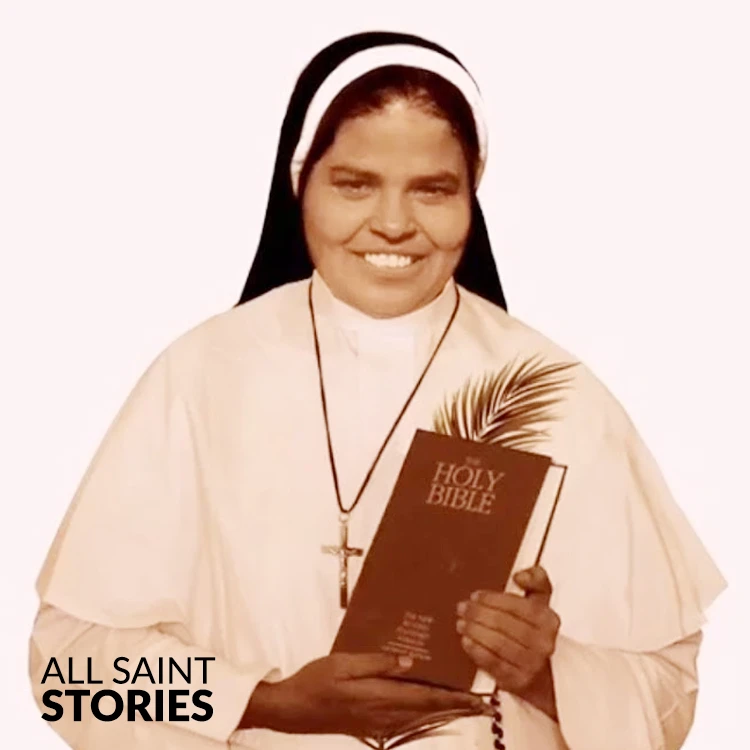
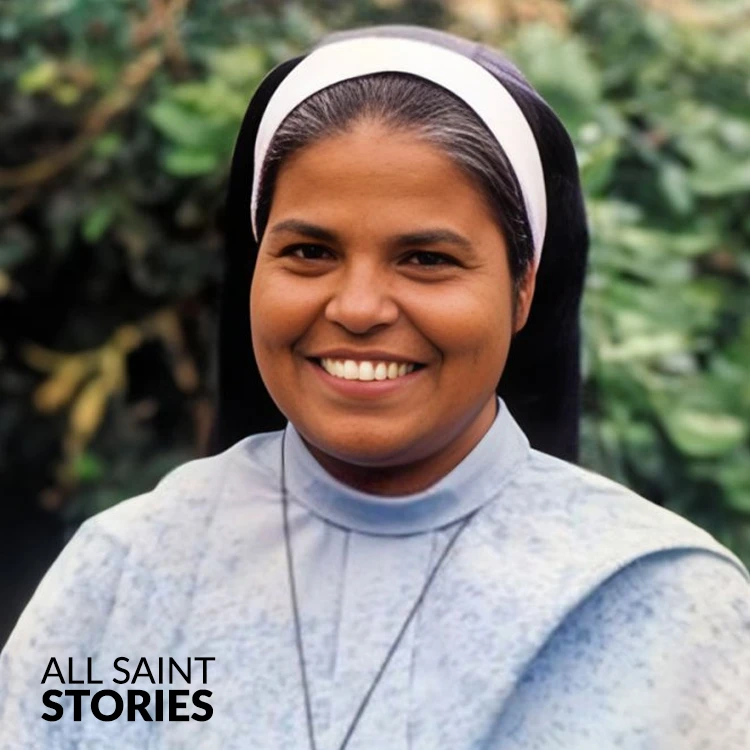
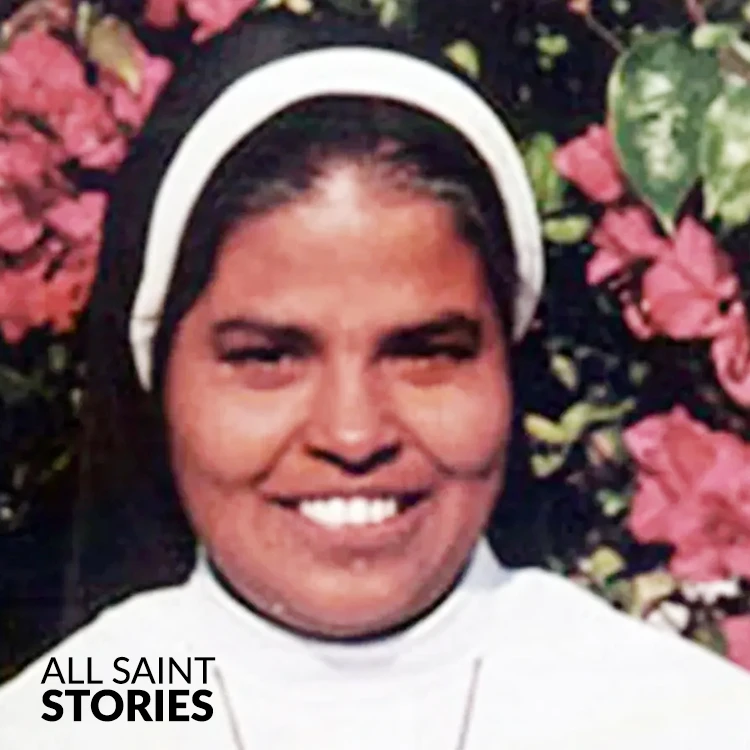
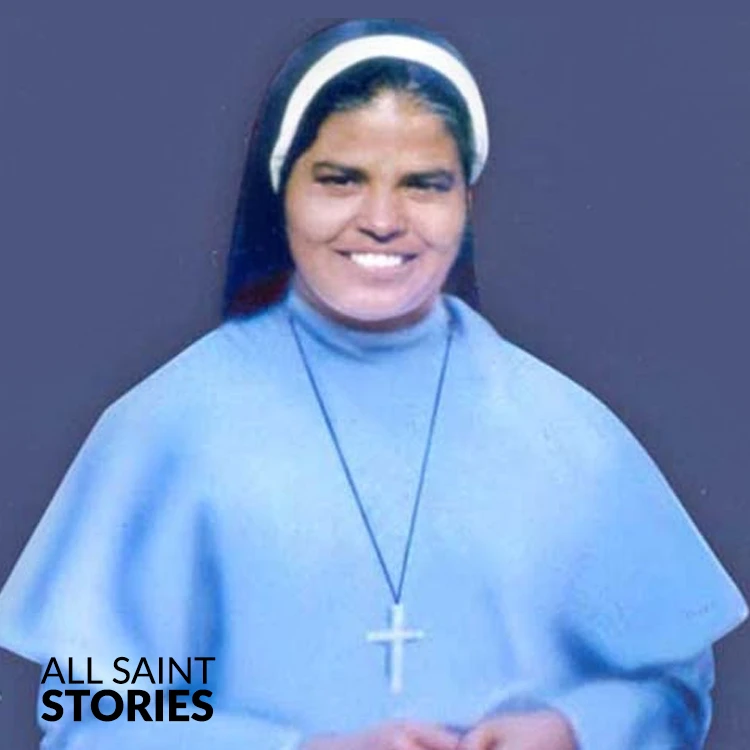
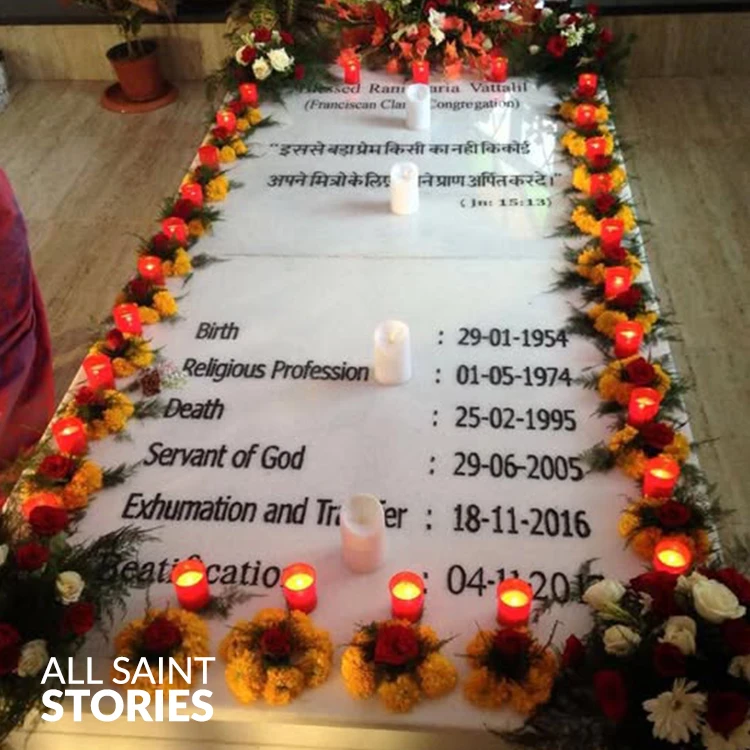
 English
English
 Italian
Italian
 French
French
 Spanish
Spanish
 Malayalam
Malayalam
 Russian
Russian
 Korean
Korean
 Sinhala
Sinhala
 Japanese
Japanese
 Arabic
Arabic
 Portuguese
Portuguese
 Bantu
Bantu
 Greek
Greek
 German
German
 Dutch
Dutch